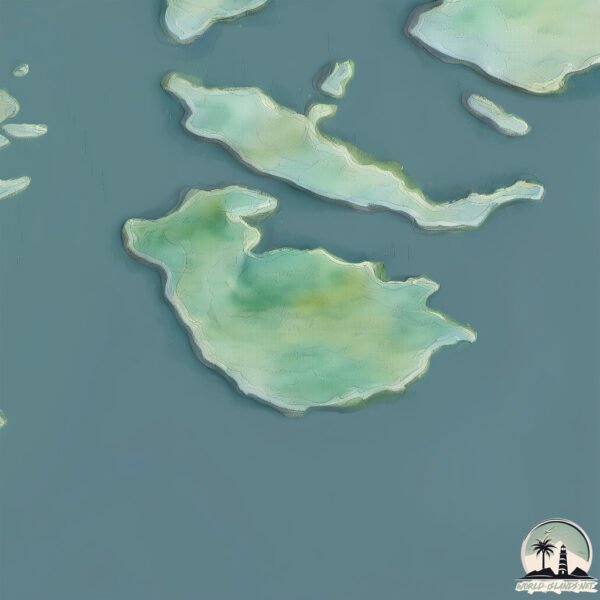Opingiviksuak Island

Welcome to Opingiviksuak Island, a Polar island in the Labrador Sea, part of the majestic Atlantic Ocean. This guide offers a comprehensive overview of what makes Opingiviksuak Island unique – from its geography and climate to its population, infrastructure, and beyond. Dive into the details:
- Geography and Size: Explore the island’s size and location.
- Climate and Weather: Weather patterns and temperature.
- Topography and Nature: Uncover the natural wonders of the island.
- Infrastructure and Travelling: Insights on reaching, staying, and making the most of your visit.
- News and Headlines: Latest News.
Geography and size of Opingiviksuak Island
Size: 12.8 km²
Coastline: 19.4 km
Ocean: Atlantic Ocean
Sea: Labrador Sea
Continent: North America
Opingiviksuak Island is a Medium Island spanning 13 km² with a coastline of 19 km.
Archipel: –
Tectonic Plate: North America – Covers North America and parts of the Atlantic and Arctic Oceans, characterized by diverse geological features and varying levels of seismic activity.
The geographic heart of the island is pinpointed at these coordinates:
Latitude: 57.43370327 / Longitude: -61.53798328
Climate and weather of Opingiviksuak Island
Climate Zone: Polar
Climate Details: Tundra
Temperature: Cold
Climate Characteristics: The tundra climate features long, extremely cold winters and short, cool summers. Vegetation is limited to mosses, lichens, and small shrubs due to the low temperatures and short growing seasons. Biodiversity is low, but some specialized species thrive.
Topography and nature of Opingiviksuak Island
Timezone: UTC-04:00
Timezone places: America/La_Paz
Max. Elevation: 212 m
Mean Elevation: 74 m
Vegetation: Herbaceous Cover
Tree Coverage: 15%
The mean elevation is 74 m. The highest elevation on the island reaches approximately 212 meters above sea level. The island is characterized by Hills: Gently sloping landforms with rounded tops, having a maximum elevation between 200 and 500 meters. Hills contribute to a varied landscape on islands.
Dominating Vegetation: Herbaceous Cover
Comprising mainly of grasses, herbs, and ferns, these areas are common in prairies, meadows, and savannas, and can vary widely in species composition. Opingiviksuak Island has a tree cover of 15 %.
Vegetation: 5 vegetation zones – Highly Diverse Island
With five different vegetation zones, these islands offer a rich tapestry of ecosystems. The variety could include dense forests, open meadows, wetlands, coastal zones, and more. This level of diversity supports an intricate web of life, with each zone playing a vital role in the overall ecological health and balance of the island.
Infrastructure and Travelling to Opingiviksuak Island
Does the island have a public airport? no.
There is no public and scheduled airport on Opingiviksuak Island. The nearest airport is Nain Airport, located 97 km away.
Does the island have a major port? no.
There are no major ports on Opingiviksuak Island. The closest major port is GOOSE BAY, approximately 470 km away.
The mean population of Opingiviksuak Island is 0 per km². Opingiviksuak Island is Uninhabited. The island belongs to Canada.
Continuing your journey, Kikiktaksoak Island is the next notable island, situated merely km away.
rookery
Canada is classified as Developed region: G7: Group of Seven – Major advanced economies, including Canada, France, Germany, Italy, Japan, the United Kingdom, and the United States. The level of income is High income: OECD.
News – Latest Updates and Headlines from Opingiviksuak Island
Stay informed with the most recent news and important headlines from Opingiviksuak Island. Here’s a roundup of the latest developments.
Please note: The data used here has been primarily extracted from satellite readings. Deviations from exact values may occur, particularly regarding the height of elevations and population density. Land area and coastline measurements refer to average values at mean high tide.
